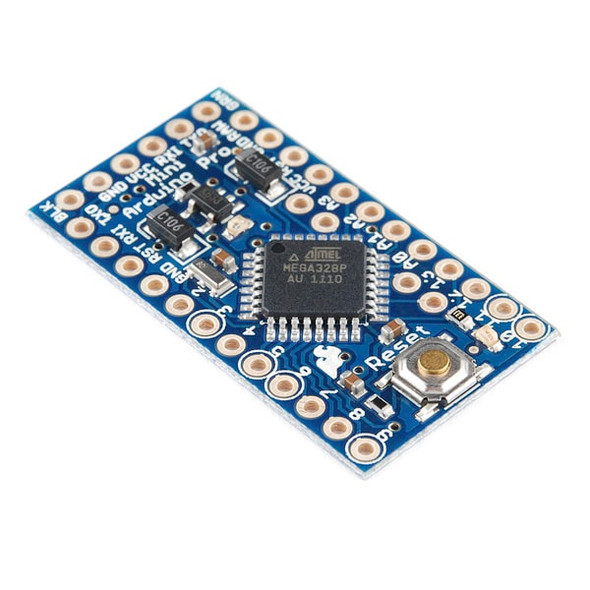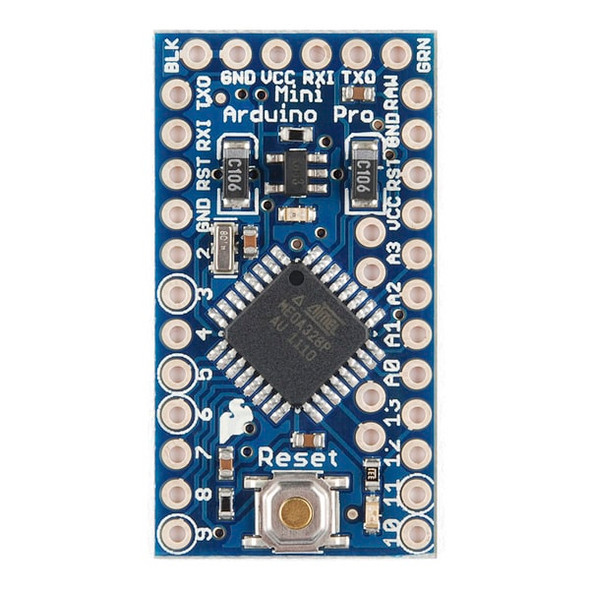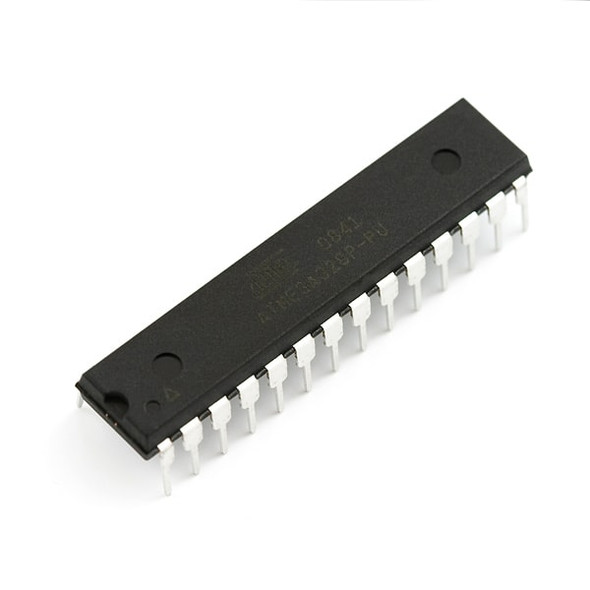Description
Pro Micro - 3.3V/8MHz (DEV-12587)
Here at SparkFun, we refuse to leave ‘good enough’ alone. That’s why we’re adding to our line-up of Arduino-compatible microcontrollers once more! The Pro Micro is similar to the Pro Mini except with an ATmega32U4 on board. The USB transceiver inside the 32U4 allows us to add USB connectivity on-board and do away with bulky external USB interface.
This tiny little board does all of the neat-o Arduino tricks that you’re familiar with: 4 channels of 10-bit ADC, 5 PWM pins, 12 DIOs as well as hardware serial connections Rx and Tx. Running at 8MHz and 3.3V, this board will remind you a lot of your other favorite Arduino-compatible boards but this little guy can go just about anywhere.
This is the 3.3V version so, as always, keep in mind the limits of system voltage and so forth. The lower system voltage also has its advantages, though, like ease of use with many common 3.3V sensors. There is a voltage regulator on board so it can accept voltage up to 12VDC. If you’re supplying unregulated power to the board, be sure to connect to the “RAW” pin on not VCC.
Not sure which Arduino or Arduino-compatible board is right for you? Check out our Arduino Buying Guide!
Note: See the GitHub link below for support with the Arduino IDE.
Dimensions: 1.3x0.7"
Features:
- ATMega 32U4 running at 3.3V/8MHz
- Supported under Arduino IDE v1.0.1
- On-Board micro-USB connector for programming
- 4 x 10-bit ADC pins
- 12 x Digital I/Os (5 are PWM capable)
- Rx and Tx Hardware Serial Connections
- Our Smallest Arduino-Compatible Board Yet!
Documents:
- Schematic
- Eagle Files
- Hookup Guide
- Graphical Datasheet
- Datasheet (ATMega 32U4)
- Firmware Note
- Arduino Addon Files
- Arduino Addon Files (IDE 1.5+)
- GitHub (Design Files)
1 Review
-
Title of review 726
It's an Arduino with "real" USB. Just what I need. Decent form factor. All good except that the COM port changes often/every time you program it which is frankly infuriating. The instructions helpfully tell you to push the button twice to keep it in bootloader mode, but there's no button on this board. The support documentation is also a bit vague really and the schematic has an error (3v3 board has 8MHz xtal, not 16MHz). <br /><br />This board was bought to replace an Adafruit Trinket, which is a better physical size (smaller) has a bitbanged USB port (which is actually more flexible, weirdly) but is just a few pins short on the useable IO. Consider the Trinket if you've got a really simple project that needs USB and just I2C or 3 GPIO.

















